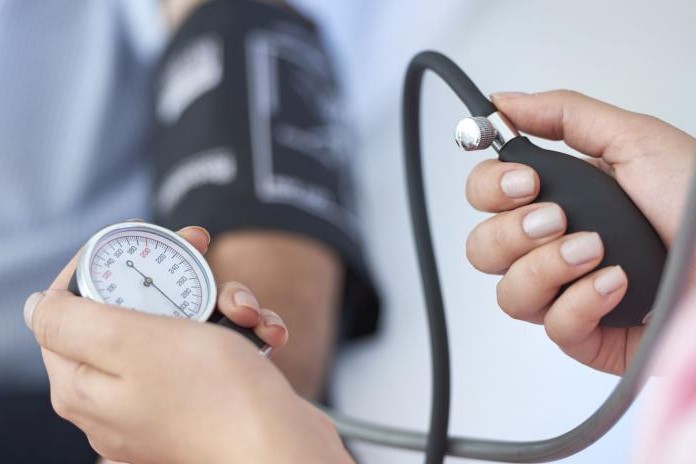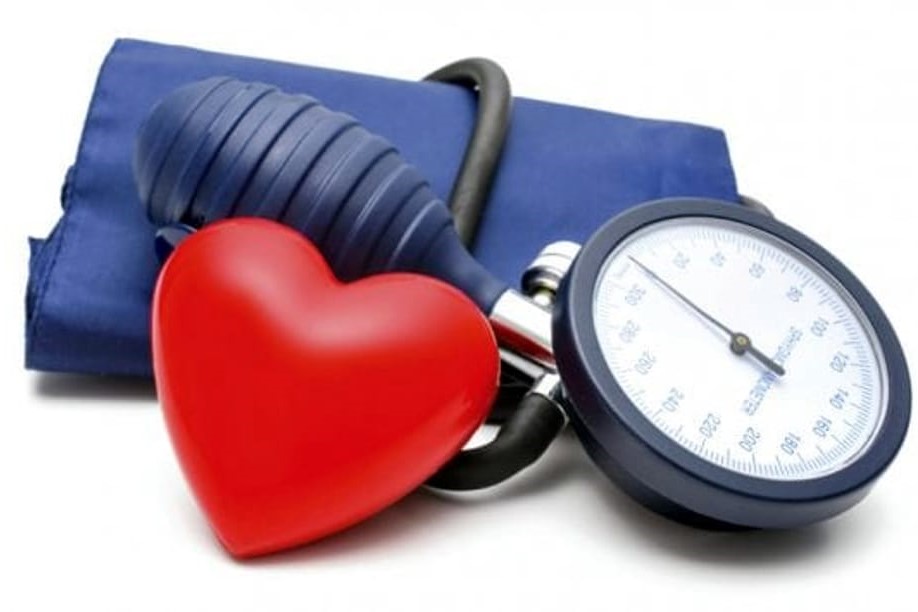
Assess your risk of secondary hypertension: what conditions or diseases cause high blood pressure?
Secondary hypertension is high blood pressure that is caused by another condition. Several problems that affect the kidneys, endocrine system, and blood vessels can cause secondary hypertension
High blood pressure in a young person or that is very sudden or severe can indicate secondary hypertension.
Primary vs. Secondary Hypertension
Primary hypertension, also known as essential hypertension, is defined as high blood pressure that is not due to an underlying condition.
This is the most common form of high blood pressure.
It’s responsible for 90% of cases.1
Genetics, aging, and lifestyle factors like diet and a sedentary (inactive) lifestyle can contribute to primary hypertension.
Secondary hypertension, on the other hand, is high blood pressure that is directly caused by another condition.
Secondary hypertension should be suspected when high blood pressure:
- Occurs or worsens abruptly
- Is diagnosed at a young age
- Is not controlled with multiple medications
- Has certain characteristics that suggest an underlying cause
What Is Considered High Blood Pressure?
Hypertension is generally defined as blood pressure that exceeds 130/80 millimeters of mercury (mmHg) on multiple readings.
It can be classified as primary or secondary depending on whether it is directly caused by another condition.
Risk factors for high blood pressure include:
- Genetics
- Age
- Sedentary lifestyle
- Dietary patterns such as high salt intake, smoking, diabetes, and obesity
Anyone with elevated blood pressure should be monitored by a healthcare provider for treatment.
Those with very elevated readings that accompany symptoms (such as severe headache or confusion), and those with chest pain or weakness on one side of the face or body should seek medical attention immediately.
Causes of Secondary Hypertension
Renovascular Hypertension
The renal arteries are two arteries that arise from the aorta, the main artery that carries blood from the heart to the rest of your body.
The renal arteries bring blood to each of the kidneys.
When these arteries become obstructed, the kidneys receive less blood flow and secrete the hormone renin.
Renin ultimately raises blood pressure through its effects on sodium, fluid retention, and blood vessel behavior via the renin-angiotensin-aldosterone (RAA) system.
Most renal artery stenosis is due to atherosclerosis (a buildup of cholesterol plaques, in the renal arteries).
Risk factors for atherosclerosis include:
- High cholesterol
- Smoking
- Diabetes
Some people with renal artery stenosis, such as those who develop heart complications or who are unable to control blood pressure with multiple medications, may be considered for renal artery stenting.
Another cause of obstructed blood flow to the kidneys is fibromuscular dysplasia.
This condition is more often seen in young and middle-aged women and can also affect other arteries in the body.2
In fibromuscular dysplasia, the structure of arterial walls is abnormal, leading to narrowing (stenosis), enlargement (aneurysms), and even tears (dissection).
Medications that control blood pressure can treat fibromuscular dysplasia of the renal arteries.
More severe cases may require angioplasty, a procedure to open the narrowing blood vessel with a balloon.
Kidney Disease
Problems in the kidneys that affect its filtration system and small blood vessels, known as renal parenchymal disease, are one of the most common causes of secondary hypertension.
Kidney disease can have many causes and affects people of all ages.
Kidney disease causes high blood pressure through improper handling of fluid and electrolytes, as well as through activation of the RAA system.
Treatment of kidney disease includes:
- Treating the underlying cause
- Preventing progression of renal disease
- Restricting sodium and fluid intake
- Blood pressure medications
- Dialysis or renal (kidney) transplant (in severe cases)
Hyperaldosteronism
Hyperaldosteronism is an often-overlooked cause of secondary hypertension.
Aldosterone is a hormone made by the adrenal glands that plays a role in sodium and fluid retention.
Excess levels of aldosterone may be caused by overactive adrenal cells or a tumor.
Aldosterone causes the kidneys to hold on to salt and fluid, which increases blood volume and blood pressure.
Signs of hyperaldosteronism include high sodium and low potassium levels in the blood.
Aldosterone antagonists, such as Aldactone (spironolactone), can treat hyperaldosteronism.
If hyperaldosteronism is caused by a tumor, it may be cured by removal with surgery.
Obstructive Sleep Apnea
Obstructive sleep apnea (OSA) contributes to high blood pressure through its effects on the lungs and heart.
During sleep, people with OSA experience obstructed airways, which involves snoring, gasping, and pauses in breathing.
This activates the sympathetic nervous system, which increases blood pressure.
Obstructive sleep apnea is diagnosed with a sleep study. It is treated with oral appliances that fit over the teeth or continuous positive airway pressure (CPAP), in which you wear a mask that delivers a steady stream of oxygen during sleep.
Treating Sleep Apnea
While the link is still being investigated, it appears that treating sleep apnea may have beneficial effects on blood pressure.
Despite these unclear effects on blood pressure, treating sleep apnea has been shown to improve sleep and quality of life.3
Medications and Substance Use
Certain medications can cause secondary hypertension.
Consider having a healthcare provider review any medications you are taking to determine if they could be worsening high blood pressure.
Some medications that increase blood pressure include:
- Oral contraceptive (birth control) pills
- Nonsteroidal anti-inflammatory drugs (NSAIDs) like Advil or Mortin (ibuprofen) and Aleve (naproxen)
- Some antidepressants like Effexor (venlafaxine)
- Herbal products like ephedra and licorice, among others
- Some immunosuppressants like cyclosporine and tacrolimus
- Alcohol and drugs, such as cocaine, amphetamines, and anabolic steroids, also raise blood pressure.
Thyroid Disorders
Both overactive and underactive thyroid can cause high blood pressure.
While thyroid disorders are common, they are not a common cause of secondary hypertension.
If you have high blood pressure along with other signs of thyroid dysfunction, such as changes in energy level, hair, and nails, consider having your thyroid checked.
Pheochromocytoma
Pheochromocytoma is a rare tumor of the adrenal gland that releases catecholamines.
Catecholamines are the stress hormones responsible for the fight-or-flight response, which impact the other parts of the body, including increased blood pressure.
People with pheochromocytoma have intermittent bouts of elevated blood pressure, headaches, and jitteriness.
Urine and lab tests can confirm elevated catecholamine levels to diagnose pheochromocytoma, while imaging tests localize the tumor.
Treatment involves removing the tumor with surgery.
Aortic Coarctation
Aortic coarctation is a congenital abnormality in which the main blood vessel in the body is narrow.
Severe narrowing can be a cause of hypertension in children, whereas more mild narrowing may not be found until adulthood.
People with aortic coarctation may also have heart abnormalities like a ventricular septal defect (a hole in the wall separating the two chambers) or a bicuspid aortic valve, in which the aortic valve has only two cusps instead of three.
Aortic coarctation should be suspected in any young person with high blood pressure.
It can be treated with surgery or less invasive treatments.
However, the narrowing can come back, and the high blood pressure may not go away.4
Other Endocrine Disorders
Some rare endocrine disorders can cause secondary hypertension, including:
- Acromegaly
- Primary hyperparathyroidism
- Congenital adrenal hyperplasia
- Cushing’s syndrome
These disorders are diagnosed with lab tests, which may include hormone stimulation testing and imaging tests. Treatment varies according to the specific underlying cause.
Medications and surgery may be required.
Diagnosing Secondary Hypertension
Your healthcare provider may suspect secondary hypertension if you develop high blood pressure at a young age, have abrupt onset, or you require many medications to control your blood pressure.
Evaluation first involves a physical examination with a healthcare provider, who will also take a full medical history. You will be asked about your:
- Symptoms
- Medications
- Substance use
- Family history
The physical exam will include palpating (examining by touch) your pulses and listening to your heart and lungs.
A physical examination will be followed by lab work. Blood and urine tests can show the presence of kidney disease and hormonal problems.
The diagnosis will be guided by results from these tests.
For example, if potassium levels are low, you may need to be evaluated for hyperaldosteronism with more lab work and imaging tests.
If you have abnormal kidney function, your provider may want to order an ultrasound of your kidneys and renal arteries.
Treatment and Management
Treatment of secondary hypertension involves treating the underlying cause.
In some cases, medication alone can help treat secondary hypertension.
For example, some people with hyperaldosteronism may only need to take a specific medication called an aldosterone antagonist to see drastic improvements in blood pressure.
Other situations may require medical procedures.
For example, surgery is required to remove the tumor in people with pheochromocytoma.
Some people with renal artery stenosis whose blood pressure is not responding to multiple medications may be considered for renal artery stenting, which involves placing a tube in the body to help open up the blood vessels leading to the kidneys.
Ongoing Monitoring
Regardless of the cause of secondary hypertension, it’s always important to have regular follow-up with your healthcare provider for continued monitoring of both blood pressure and the underlying condition in cases of secondary hypertension.
Read Also:
Emergency Live Even More…Live: Download The New Free App Of Your Newspaper For IOS And Android
Pulmonary Ventilation In Ambulances: Increasing Patient Stay Times, Essential Excellence Responses
Thrombosis: Pulmonary Hypertension And Thrombophilia Are Risk Factors
Pulmonary Hypertension: What It Is And How To Treat It



